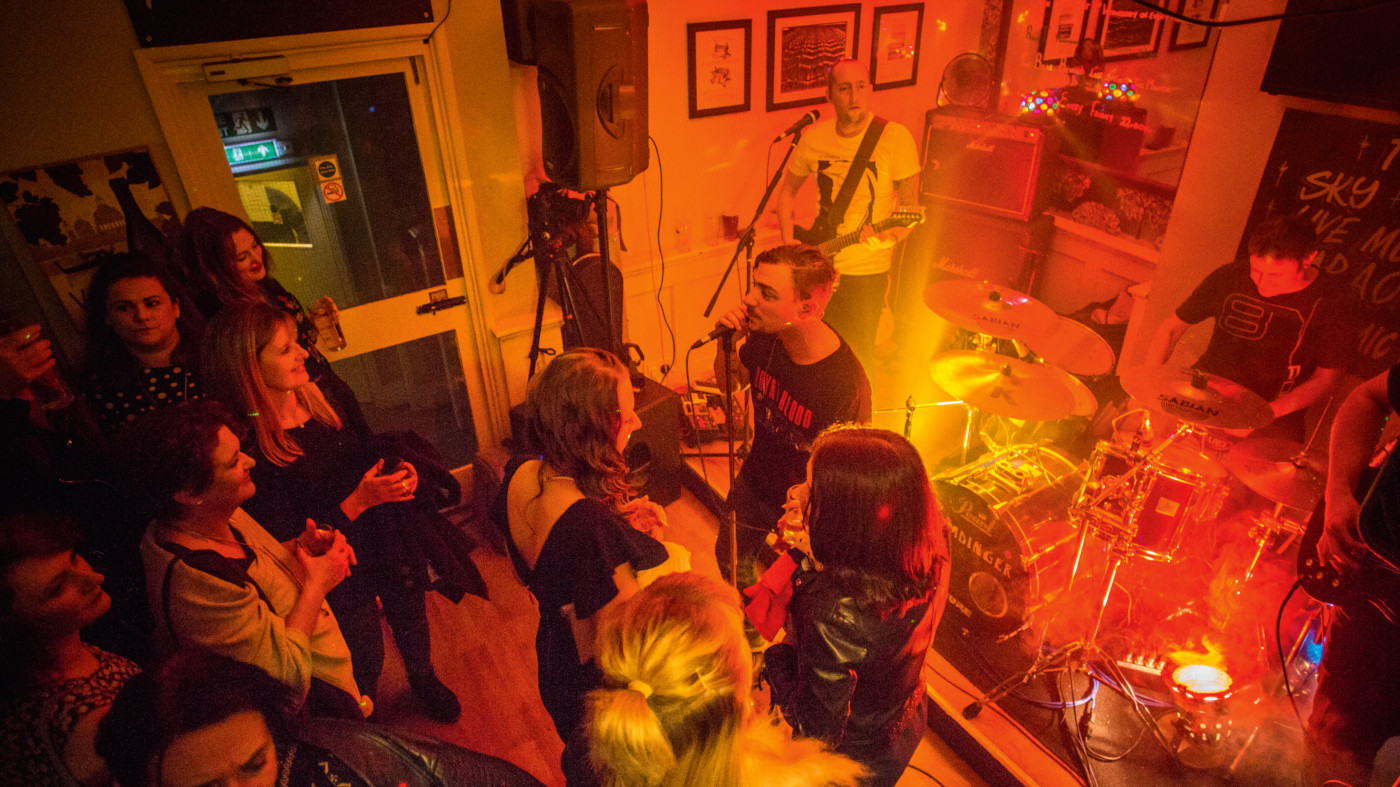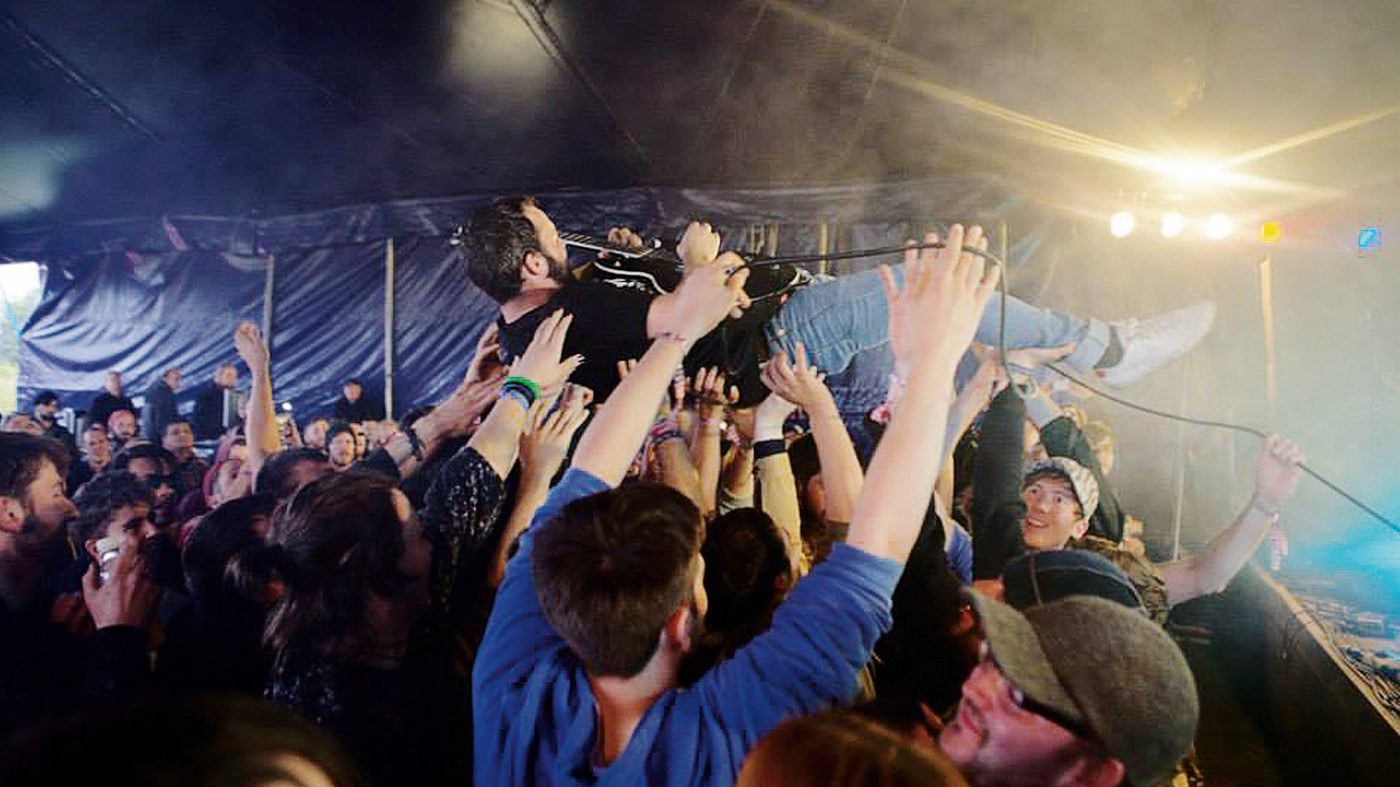7 ways to play better gigs
Sound advice every gig-playing guitarist needs to hear

From prep to performance, there’s simple ways to step up live.
1. Pack a survival kit
Unless you’re one of the select group of musicians with a road crew, you’ll need to be your own tech. And there are certain things you will definitely need at some point if you’re playing live. Here’s our essential list to pack and why:
- Pen and paper: Not just to write the setlist for you, but any other members too.
- Strings: You were taking these anyway, right?
- Spare guitar leads, patch cables, pedal power leads: Make sure you check all your connections before soundcheck and the start of your set.
- Gaffer tape: The universal cure for all manner of breaks.
- Multi-plug adapter: Never assume that the venue will provide them.
- Amp backup: A portable power amp like the Electro-Harmonix 44 Magnum essentially gives you a backup handheld head that can be plugged into a speaker.
- Picks and Blu Tack: What happens if you drop your pick mid-song? Attach spares on your mic stand or guitar.
- 9V batteries: Backups for your more essential pedals if your power supply goes down.
- First aid: Painkillers in case a headache strikes, Vocalzone for throat issues and microtape / plasters for any cuts.

2. Treat your sound engineer right
You need to treat your pre-gig routine as a checklist, which will mean there’s a slimmer chance of things going wrong when you actually perform.
Your routine should include introducing yourself to the sound engineer when you arrive and clearly communicating what you have in terms of gear, mic’ing requirements and what you need from the monitor sound. They can’t help you if they don’t know.
And buying them a drink certainly won’t hurt either - politeness, respect and a pint make for a winning combination.
3. Use your soundcheck wisely
Soundcheck isn’t for last minute practice; it’s for the sound engineer to get the levels, mix and mic placements right and also to make sure you have the right monitor mix to hear your instrument, voice and the other band members you need.
Communicate with the engineer, and listen to what they’re instructing from the desk. When it’s time to play a song through, try to choose something that really showcases your sound so the engineer gets a good insight. Listen to that monitor mix; can you hear yourself? Can the rhythm section hear what they need to follow the changes?
Want all the hottest music and gear news, reviews, deals, features and more, direct to your inbox? Sign up here.

4. Tune, and then tune again
As any of you who have played live will know, gigs are strange mixes of adrenaline, joy and sheer panic. You need to take the variables out of the equation so you can focus on the fun parts and if your guitar is out of tune, it’s obviously not a great start.
Tune every guitar you’ll use in the set ahead of soundcheck, and then tune them again just before you play. Yes, that means the backup, too - and make sure that’s handy. String breaks are unfortunate; making the crowd wait in silence for five minutes while you locate and tune your other guitar is just bad planning.
And of course, monitor your tuning between songs - for you singers and backing vocalists that means mastering the art of talking to the audience while fine-tuning your B string.
5. Tame your levels, boost your mids
We’d advise setting your amps to sensible volume levels onstage. Especially if you’re mic’ing them and the audience isn’t reliant on stage levels alone to hear you.
Keeping those onstage levels down is not just for the sake of your ears but also allows the sound engineer to have more control over the overall front-of-house balance. That will mean the monitors don’t need to be pushed to levels where they begin to feed back in order for singers to hear themselves.
Always remember that when it comes to EQ, the guitar is designed to be a mid-heavy instrument - embrace that, as mids can give you the punch you might be looking for instead of added gain. And scooping the mids essentially buries you in the rhythm section.
6. Keep the momentum
Banter isn’t the only way to keep a crowd engaged. Feel awkward talking on the mic to cover between songs while people tune, change guitars and the drummer adjusts their hi-hat? Maybe fill that silence with musical segues that make you sound like a well-oiled musical machine.
You could engage some pre-prepared loops on a pedal, or have musical pieces ready to play. Silence may cause the audience’s attention to drift so joining together your songs in some way is a great way to keep the momentum going.

7. Keep something in your back pocket
Set times should be respected - go over and it eats into someone else’s time or forces you to curtail a grand finale. Time your sets in practice as best you can, allowing for a few minutes for things like tuning and unforeseen fixes.
But you may also find your audience wanting more and the venue happy to allow it - so it’s best to keep something ready for such an enviable encore situation. Maybe a cover that you know will go down well and keep the energy levels up and end on a high.
Pro tip: EQ any amp fast

Matt Schofield explains how
There may come a time where logistics or necessity mean you have to borrow an amp to play a set. Immediately you might feel that you’re outside your comfort zone and your tone will be compromised. Fear not; even with the unfamiliar there are universal truths when it comes to tone.
Matt Schofield is a tonehound but also a blues guitarist who has gigging experience all over the world. He says these three simple points to remember enable you to make any amp as good as it can get...
- “You’ll find that every pot has an obvious cusp point in its rotation - every single one - where it goes from not doing much, to where it really kicks in. So I sweep through the pots one by one and find those spots. All amps will do this - bass is especially easy to hear... nothing, nothing, nothing, then bang, there it is!”
- “Gain is just the same, master... and so on. Maybe not so much for reverb - just put that where you like it - but all the others have a strongest sweep point in the rotation, so I find it, and that’s where it gets set! It’s the same with any pedals, all drives and tones.”
- “If you do that, the amp is set as evenly as it can be; not too trebly, not too dark. With everything set right on the cusp, you can push it over by digging in, or pull it back by playing softer. It makes everything really responsive and sensitive to what you do. The rest is up to you!”
Total Guitar is Europe's best-selling guitar magazine.
Every month we feature interviews with the biggest names and hottest new acts in guitar land, plus Guest Lessons from the stars.
Finally, our Rocked & Rated section is the place to go for reviews, round-ups and help setting up your guitars and gear.
Subscribe: http://bit.ly/totalguitar
